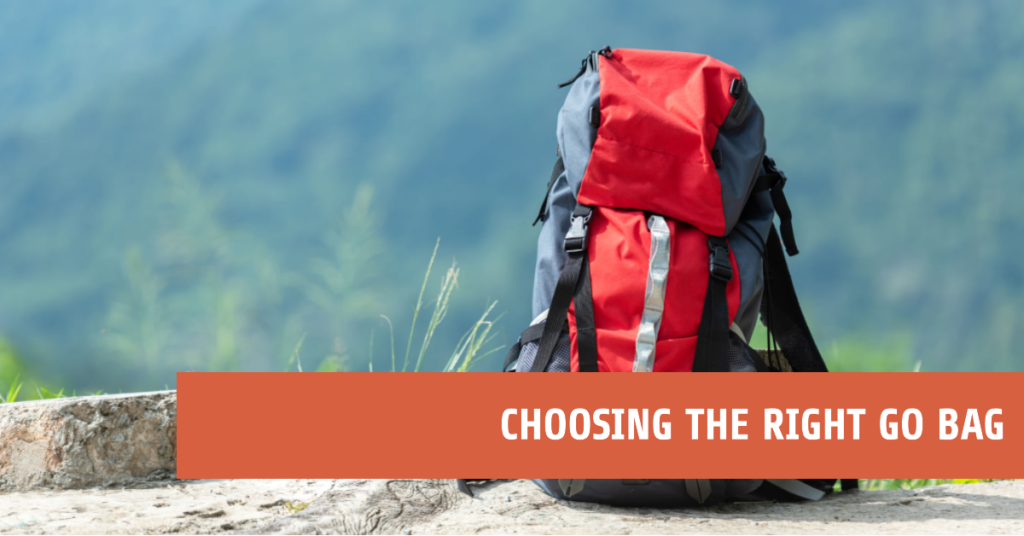
We live in an unpredictable world, and it’s essential to be prepared for emergencies. One of the best ways to ensure you’re ready for anything is by having a well-equipped go bag, also known as a bug out bag, at your disposal. In this guide, we’ll walk you through everything you need to know about choosing the perfect go bag and building your own go bag list.
Understanding the Purpose of a Go Bag
A go bag is a portable, pre-packed survival kit designed to provide essential items during an emergency when you need to evacuate quickly. The main purpose of a go bag is to have all the necessities readily available so that you can grab it and go without wasting precious time searching for items during a crisis.
Types of Go Bags
There are different types of go bags, each tailored to specific situations or individual needs. Some common types include:
Bug Out Bags (BOBs)
A bug out bag is designed to provide you with enough supplies to survive for at least 72 hours. It typically includes items for shelter, food, water, first aid, and personal protection. Popular brands for bug out bags include 5.11 Tactical, Maxpedition, and Condor.
Get Home Bags (GHBs)
A get home bag is intended to help you get back to your home or a safe location during an emergency. It usually contains essential items like a change of clothes, water, snacks, and basic tools. Brands like Osprey, North Face, and Patagonia are known for their reliable get home bags.
Everyday Carry Bags (EDCs)
An everyday carry bag contains essential items you might need on a daily basis, such as a pocket knife, flashlight, and multi-tool. While not as comprehensive as a bug out bag, an EDC can still be a lifesaver during an emergency. Look for brands like Vanquest, Vertx, or Hazard 4 for high-quality EDC bags.
Choosing the Right Go Bag for Your Needs
When selecting the perfect go bag, consider the following factors:
- Size and Capacity: Choose a bag that can comfortably hold all your essential items without being too bulky or heavy. A bag with a capacity of 30-50 liters is usually ideal for most people.
- Comfort and Fit: Look for a go bag with adjustable straps, padded shoulder straps, and a supportive hip belt to ensure a comfortable fit during long periods of use.
- Durability: Opt for a bag made from high-quality materials like ripstop nylon or Cordura, which can withstand the wear and tear of daily use and emergency situations.
- Organization: Seek out a go bag with multiple compartments, pockets, and attachment points to keep your gear organized and easily accessible.
- Water Resistance: Since you never know what weather conditions you might encounter during an emergency, it’s essential to choose a go bag with water-resistant materials or a built-in rain cover.
Maintaining Your Go Bag
Once you’ve assembled your go bag, it’s crucial to maintain it regularly. Here are some maintenance tips to ensure your go bag is always ready when you need it:
- Check expiration dates on food, water, and medications, and replace them as needed.
- Test the functionality of essential items like flashlights, radios, and stoves, and replace batteries as necessary.
- Regularly inspect your bag for any signs of wear and tear, and repair or replace damaged items.
- Revisit your go bag list periodically to ensure it’s up to date and relevant to your current needs and circumstances.
- Store your go bag in an easily accessible location in your home, office, or vehicle, so it’s ready to grab and go in case of an emergency.
Conclusion
Building and maintaining a go bag is an essential step in being prepared for emergencies. By choosing the right go bag, creating a comprehensive go bag list, and keeping it well-maintained, you’ll be ready to face any situation with confidence. For a more detailed guide on assembling your go bag and a list of recommended supplies, visit Essential Go Bag List: Your Comprehensive Guide.
